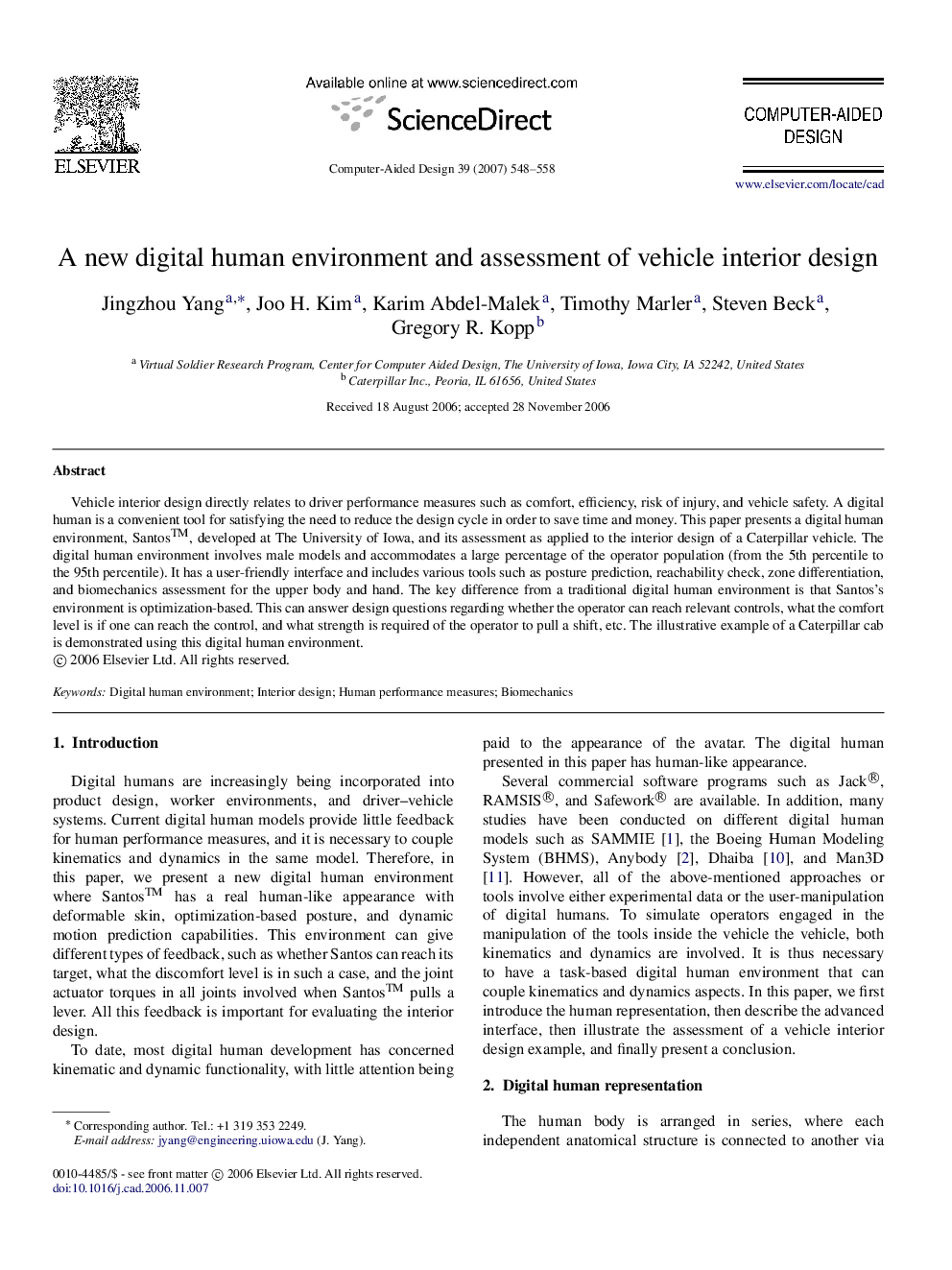| Article ID | Journal | Published Year | Pages | File Type |
|---|---|---|---|---|
| 440523 | Computer-Aided Design | 2007 | 11 Pages |
Vehicle interior design directly relates to driver performance measures such as comfort, efficiency, risk of injury, and vehicle safety. A digital human is a convenient tool for satisfying the need to reduce the design cycle in order to save time and money. This paper presents a digital human environment, Santos™, developed at The University of Iowa, and its assessment as applied to the interior design of a Caterpillar vehicle. The digital human environment involves male models and accommodates a large percentage of the operator population (from the 5th percentile to the 95th percentile). It has a user-friendly interface and includes various tools such as posture prediction, reachability check, zone differentiation, and biomechanics assessment for the upper body and hand. The key difference from a traditional digital human environment is that Santos’s environment is optimization-based. This can answer design questions regarding whether the operator can reach relevant controls, what the comfort level is if one can reach the control, and what strength is required of the operator to pull a shift, etc. The illustrative example of a Caterpillar cab is demonstrated using this digital human environment.
